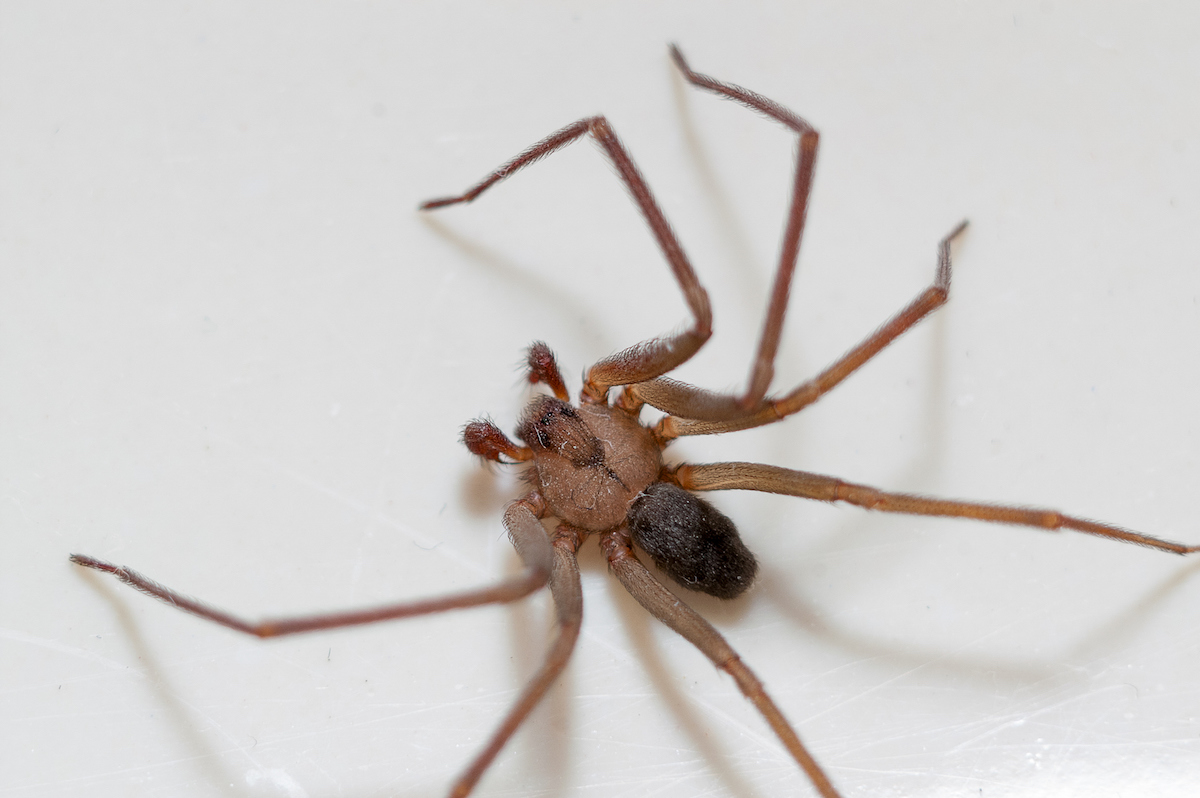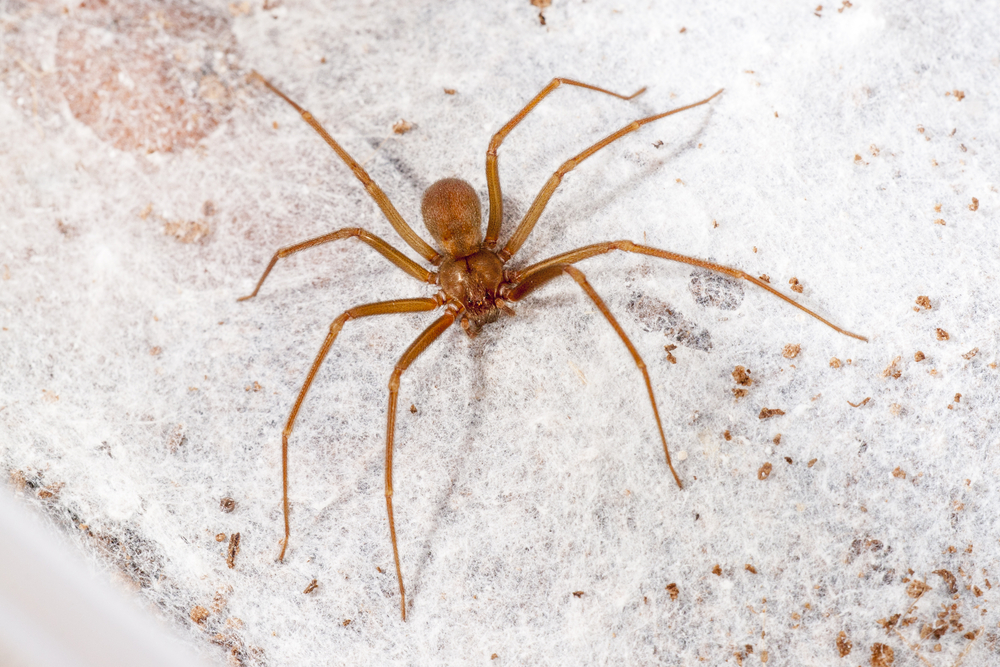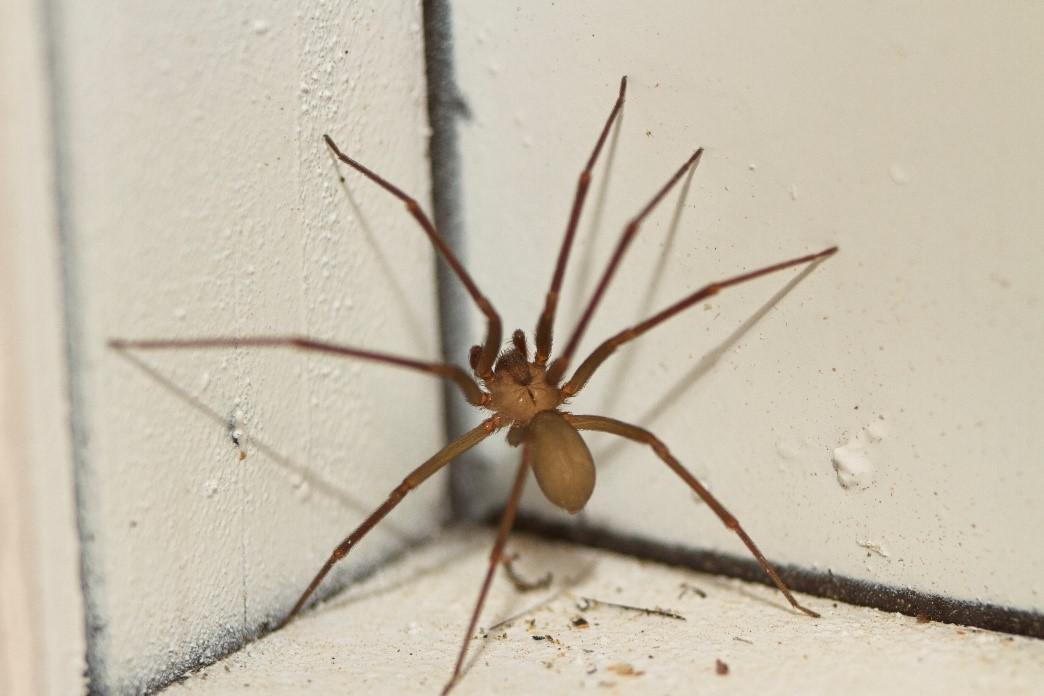
The brown recluse spider (Loxosceles reclusa) is one of the most well-known yet often misunderstood spiders in North America.
Although its venom can cause skin damage in some cases, bites from this spider are rare, and serious medical complications are even rarer.
Despite the myths and viral posts circulating online, scientific research offers a clearer understanding of this spider’s behavior, venom, habitat, and risk to humans.
What Is the Brown Recluse Spider?
The brown recluse spider, also known as the violin spider or fiddleback spider, belongs to the genus Loxosceles.
It is named for the distinctive violin-shaped marking found on its dorsal thorax (cephalothorax).
However, this identifying mark is not always clearly visible, especially in young spiders or different Loxosceles species.
One of the most distinctive traits is that they have six eyes arranged in pairs (dyads), whereas most spiders have eight.
Size and Appearance
- Body length: 6 to 12 mm (approximately 1/4 to 1/2 inch)
- Leg span: Up to 2.5 cm (1 inch)
- Color: Light to dark brown with a violin-like marking
- Other features: Fine hairs, uniform-colored legs (no bands), and oval-shaped abdomen
- Source: University of California – Integrated Pest Management
Behavior and Temperament
Despite its fearsome reputation, the brown recluse spider is not aggressive.
It is reclusive by nature, preferring to hide in dark, undisturbed areas.
Bites generally occur only when the spider is accidentally disturbed, such as when someone puts on clothing or shoes that had been left in a storage area or reaches into cluttered corners.
According to the Centers for Disease Control and Prevention (CDC), brown recluse spiders are not actively dangerous and will usually retreat if given the chance.
Source: CDC – Venomous Spiders
Where Do Brown Recluse Spiders Live?
The brown recluse is primarily found in the Midwestern and Southern United States, with confirmed populations in states such as:
- Missouri
- Kansas
- Oklahoma
- Arkansas
- Texas
- Louisiana
- Alabama
- Mississippi
- Georgia
- Tennessee
- Kentucky
While reports of brown recluse sightings exist in other parts of the U.S., including the Northeast and West Coast, experts believe these cases are often misidentifications.
Verified populations are mostly confined to the central regions of the U.S.
The spider prefers dark, dry, and secluded environments, both indoors and outdoors:
Common Outdoor Locations:
- Under rocks
- Beneath loose bark
- In woodpiles or sheds

Common Indoor Locations:
- Attics
- Closets
- Basements
- Behind furniture
- Inside cardboard boxes or seldom-used shoes/clothing
- Source: Missouri Department of Conservation
Understanding the Bite and Its Effects
Are Brown Recluse Spider Bites Dangerous?
The majority of brown recluse spider bites are minor and self-limiting, often comparable to a mild bee sting.
However, in some cases, the spider’s venom—which is cytotoxic (cell-destroying)—can cause localized skin reactions, and rarely, more severe conditions.
According to the University of California, only a small percentage of bites lead to complications such as necrosis (tissue damage) or systemic symptoms.

Symptoms of a Bite:
- Mild redness and swelling
- Itching or burning sensation
- Development of a blister or ulcer
- In rare cases: fever, chills, nausea, or fatigue
- Source: Mayo Clinic – Spider Bites
Serious Reactions Are Rare
Most bites heal within 3–6 weeks without medical intervention.
Severe reactions typically occur in individuals with pre-existing health issues or compromised immune systems.
It is always recommended to seek medical attention if a bite causes increasing pain, ulceration, or systemic symptoms.
What To Do If You’re Bitten
If you suspect a brown recluse spider bite:
- Clean the area with mild soap and water.
- Apply a cool compress to reduce swelling.
- Avoid using heat, which may worsen the reaction.
- Do not attempt to capture the spider unless it can be done safely for identification.
- Seek medical evaluation if symptoms worsen or signs of infection appear.
Antibiotics are not typically necessary unless the wound becomes infected.
In very rare cases, surgical intervention may be needed to remove damaged tissue.
Source: American Academy of Dermatology
How to Prevent Brown Recluse Spiders in Your Home
Prevention involves minimizing access and reducing favorable habitats.
Tips for Prevention:
- Declutter storage areas such as basements and attics
- Seal cracks and crevices around doors, windows, and baseboards
- Store clothing, shoes, and bedding in sealed plastic containers
- Shake out shoes and garments that have been in storage before use
- Use sticky traps to monitor indoor spider activity
- Keep woodpiles and compost at least 20 feet from your home
Professional pest control may be required if an infestation is suspected, especially in high-risk regions.
Source: University of Kentucky Entomology

Myths and Misconceptions
The brown recluse spider has been the subject of many myths and exaggerated fears.
Experts caution that many spider bite diagnoses are made without proper evidence.
According to a study in the journal Dermatology Online Journal, other conditions such as bacterial infections (like MRSA), insect bites, and even diabetic ulcers are often misdiagnosed as spider bites.
Only a handful of confirmed brown recluse bites are reported annually, and deaths are extremely rare, with no confirmed fatalities in recent decades attributed solely to its bite.
Source: Dermatology Online Journal – Misdiagnosis of Spider Bites
Conclusion
The brown recluse spider is a reclusive, non-aggressive species that plays a role in the ecosystem by controlling insect populations.
While its bite can cause discomfort and, in rare cases, tissue damage, it is not the widespread threat that some myths suggest.
By understanding its habitat, identifying characteristics, and basic precautions, you can coexist safely with this often-misunderstood arachnid.
As always, consult healthcare professionals for any medical concerns and rely on verified scientific sources to separate fact from fear.
Sources
- CDC – Venomous Spiders
- University of California IPM – Brown Recluse
- Missouri Department of Conservation – Brown Recluse
- Mayo Clinic – Spider Bites
- University of Kentucky – Brown Recluse Spider
- American Academy of Dermatology – Spider Bites
- Dermatology Online Journal – Spider Bite Misdiagnosis

